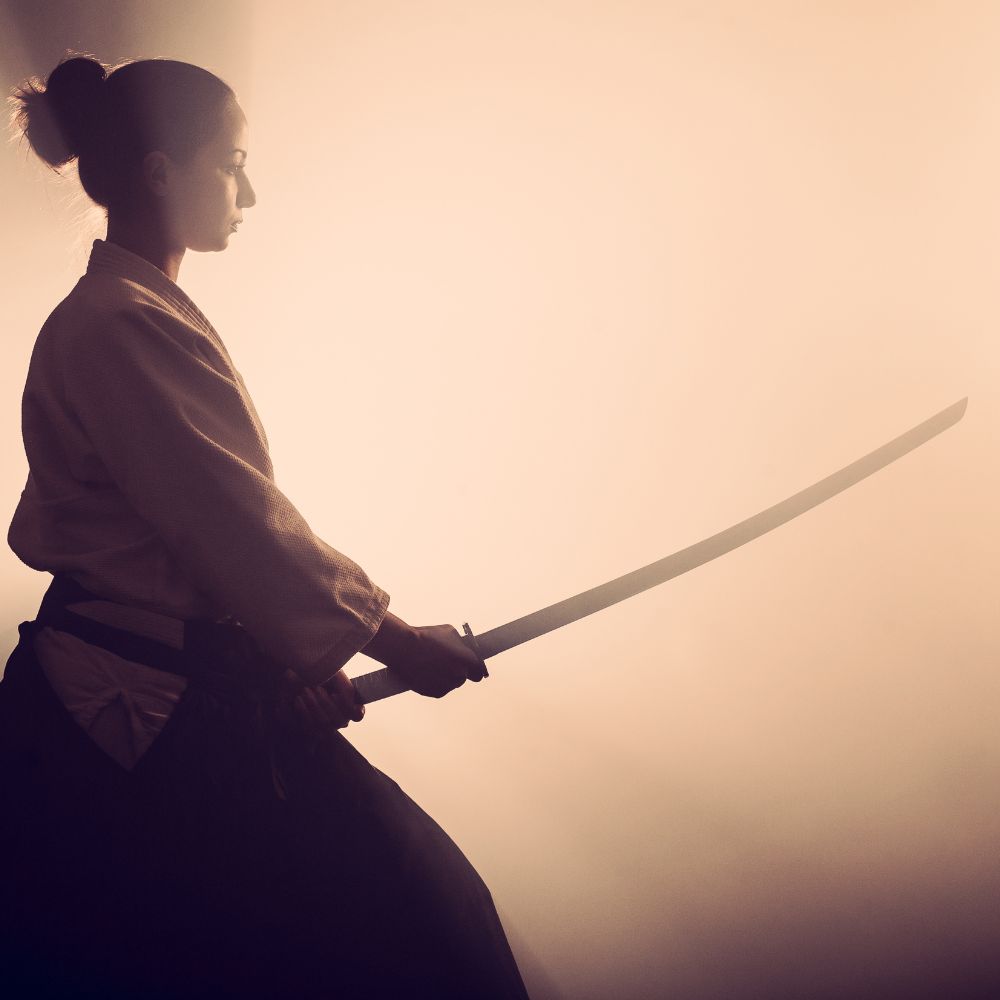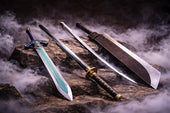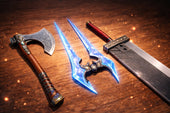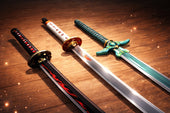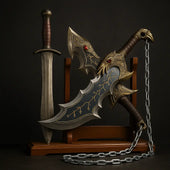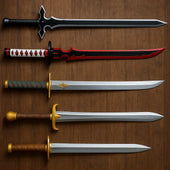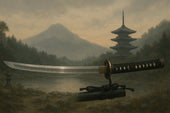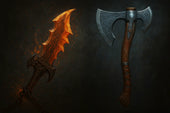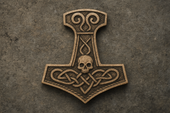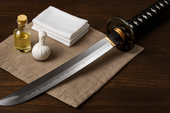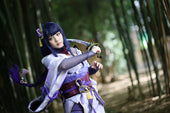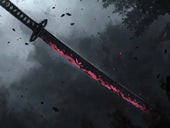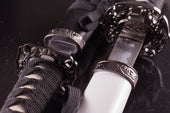Samurai swords, renowned for their elegance and precision, are more than just weapons—they are cultural icons and masterpieces of craftsmanship. One question that frequently arises among enthusiasts, collectors, and martial artists is, "How much does a Samurai sword weigh?" Whether you're delving into the history of Japanese warfare, considering a purchase, or practicing martial arts, understanding the weight of these swords is crucial. In this comprehensive guide, we’ll explore the factors that influence a Samurai sword's weight, examine the typical weight ranges for different types, and discuss why this aspect is so significant. Let’s embark on a journey into the world of Samurai swords and unravel the mystery of their weight!
Understanding the Different Types of Samurai Swords
Samurai swords come in various forms, each with unique characteristics and purposes. The three primary types of Samurai swords are the Katana, Wakizashi, and Tanto. Understanding these types is the first step in grasping how their weights differ.
-
Katana: The Katana is the most famous and iconic of Samurai swords, characterized by its curved, slender, single-edged blade. Typically, a Katana weighs between 1.1 to 1.5 kilograms (2.4 to 3.3 pounds). This weight can vary depending on the length of the blade, the materials used, and the craftsmanship.
-
Wakizashi: The Wakizashi is a shorter sword, often paired with the Katana as a sidearm. It usually weighs between 0.8 to 1.2 kilograms (1.8 to 2.6 pounds). The Wakizashi’s lighter weight made it a versatile weapon for close-quarters combat.
-
Tanto: The Tanto is the smallest of the three, more akin to a dagger than a sword. It generally weighs between 0.5 to 0.8 kilograms (1.1 to 1.8 pounds). Its lightweight design was ideal for stabbing rather than slashing.
Factors Influencing Weight Variation:
- Blade Length: Longer blades naturally increase the sword's weight.
- Materials: The type of steel and the quality of the materials used in the blade and fittings can significantly impact the overall weight.
- Craftsmanship: The forging techniques and the specific style of the swordsmith or school (ryū) can also result in variations in weight.
Factors That Influence the Weight of a Samurai Sword
Several factors contribute to the overall weight of a Samurai sword, making each one unique.
-
The Role of Materials: Traditional Samurai swords are made from high-carbon steel, which is folded multiple times during the forging process. This method, while adding strength and flexibility to the blade, also impacts its weight. Variations in the type of steel and other materials, such as the handle (Tsuka) and guard (Tsuba), further influence the sword’s weight.
-
Blade Length and Thickness: The dimensions of the blade are a primary determinant of weight. A thicker, longer blade will weigh more, while a thinner, shorter blade will be lighter. The Katana, with its longer blade, naturally weighs more than the Wakizashi or Tanto.
-
Fittings (Tsuka, Tsuba, etc.): The Tsuka (handle) and Tsuba (guard) are essential parts of the sword that can add to its weight. The materials used—whether wood, metal, or even precious stones—can make a significant difference. Traditional Samurai swords often feature intricate fittings that, while beautiful, also contribute to the overall weight.
-
Sword-Making Traditions and Schools: Different sword-making schools (ryū) and traditions have their own techniques and preferences, which can affect the weight. Some schools might prioritize a heavier blade for strength, while others might focus on a lighter design for speed and agility.
How Samurai Sword Weight Affects Handling and Performance
The weight of a Samurai sword is not just a static number; it directly influences how the sword performs in combat and how it feels in the hands of its wielder.
-
Balance and Distribution of Weight: A well-balanced sword, where the weight is evenly distributed, is crucial for effective handling. The balance point of a Katana, for instance, is typically a few inches from the guard. This balance allows for both powerful strikes and precise control.
-
Lightweight vs. Heavyweight Swords: Lightweight swords offer greater agility, allowing for quicker movements and faster strikes. However, they may lack the force behind a heavier sword, which can deliver more powerful blows. The choice between a lightweight and heavyweight sword often comes down to the fighting style and preference of the swordsman.
-
Real-World Implications: For the Samurai, the sword's weight was a critical factor in battle. A sword that was too heavy could tire the warrior quickly, while a sword that was too light might not deliver enough impact. In modern martial arts, practitioners also consider weight when choosing a sword for training or competition.
-
Durability and Maintenance: Heavier swords might be more durable, able to withstand the rigors of combat better than lighter ones. However, they also require more maintenance, as the added stress on the blade can lead to quicker wear and tear.
Historical Examples of Samurai Swords and Their Weights
Throughout history, many famous Samurai swords have been documented with specific weights, giving us insight into their use and significance.
-
Famous Samurai Swords: For instance, the Honjo Masamune, one of Japan's most famous swords, weighed around 1.4 kilograms (3.1 pounds). This balance of weight and craftsmanship made it a highly valued weapon among Samurai.
-
Case Studies: The weight of a sword often influenced the fighting style of the Samurai who wielded it. For example, the heavier Katanas were often used by Samurai on horseback, where the added weight helped deliver powerful downward strikes.
-
Evolution of Sword Weight: Over time, as the nature of warfare changed in Japan, so too did the weight of Samurai swords. Early swords were heavier and more robust, while later swords became lighter as the emphasis shifted from armor-piercing power to speed and precision.
Why Knowing the Weight of a Samurai Sword Matters
Understanding the weight of a Samurai sword is essential for various reasons, whether you are a collector, a martial artist, or a historian.
-
For Collectors: The weight of a sword can help determine its authenticity and value. Heavier swords with intricate fittings are often more valuable, especially if they come from a well-known school or period.
-
For Martial Artists: For those who practice martial arts, the weight of the sword is crucial for training. A sword that is too heavy can hinder learning, while one that is too light might not provide the necessary feedback during practice.
-
Authenticity Verification: When appraising a Samurai sword, its weight can be a key factor in verifying its authenticity. Authentic swords will have a weight that is consistent with the materials and techniques used in their creation.
-
Selecting a Sword Based on Weight: Whether you are buying a sword for display, practice, or collection, considering the weight is essential. A heavier sword might be more suitable for display or collection, while a lighter sword is better for martial arts practice.
Modern Replicas and the Weight of Contemporary Samurai Swords
In today’s market, Samurai swords are available in both antique and replica forms. Understanding the weight of these swords is essential, especially for buyers.
-
Modern Manufacturing vs. Traditional Methods: Modern replicas can vary significantly in weight compared to traditional Samurai swords. This is due to differences in materials and manufacturing techniques. Some replicas are made for display and may be heavier due to decorative elements, while others are designed for martial arts practice and are lighter.
-
Weight Considerations in Replicas: When purchasing a replica, it’s important to consider its intended use. A sword made for display might prioritize aesthetics over weight, while a practice sword should closely match the weight of an authentic Samurai sword.
-
Functionality for Display vs. Practice: If you intend to use the sword for martial arts, choosing a replica that closely matches the weight and balance of a traditional sword is crucial. Display swords, on the other hand, can afford to be heavier and more ornate.
-
Advice for Buyers: When buying a Samurai sword, whether antique or replica, always consider the weight. For martial arts, ensure the sword is not only of the right weight but also well-balanced. For collectors, the weight can be a key factor in determining the sword’s value and authenticity.
Understanding the weight of a Samurai sword is more than just knowing a number; it’s about appreciating the intricate balance between form and function that these weapons embody. Whether you are a collector, a practitioner of martial arts, or simply someone fascinated by the rich history of Samurai culture, the weight of a sword can tell you much about its origin, purpose, and value. As you explore this topic further, remember that each sword is unique, carrying with it the legacy of the Samurai who wielded it. So, whether you're choosing a sword for display, practice, or collection, let the weight be your guide.


